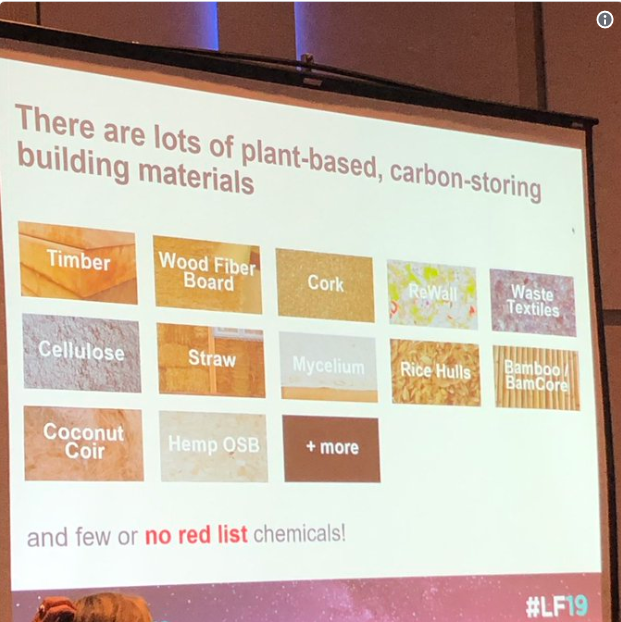The recent Living Future 2019 conference in Seattle featured a presentation about carbon storing building components.
To summarize, we cannot “net zero” our way out of the climate crisis. Net zero only addresses operational carbon. By focusing on embodied carbon, we can turn buildings into carbon sinks. The presenters tweaked Michael Pollan’s famous words about food to make their point: “Build shelter. Not too big. Mostly plants.”
By incorporating carbon-storing components (think: straw bales, hemp, bamboo), buildings can pull more carbon out of the atmosphere than they’ll ever emit before they’re even built. When coupled with net zero energy, buildings can help us drawdown atmospheric greenhouse gases. And because so many of the materials are plant-based, a shift to climate responsive buildings can boost the economies of agricultural communities across the world.
— Shan Arora, director, Kendeda Building for Innovative Sustainable Design
This session was extremely well done, and showed embodied energy in both the micro and macro scales, with the baseline argument that all decisions need to be made based on data — not rules of thumb, or what may make sense in another climate. It was great to see some of their data showing how much the grid can impact overall carbon in a project and thus should impact our decisions on embodied energy of certain materials, because a change in the grid power source can end up driving the “right” decision on some envelope items like insulation (if it’s high embodied energy like expanded foam).
— Joshua Gassman, sustainable design director, Lord Aeck Sargent
You can read the original article with much more about this conference at livingbuilding.kendedafund.org
